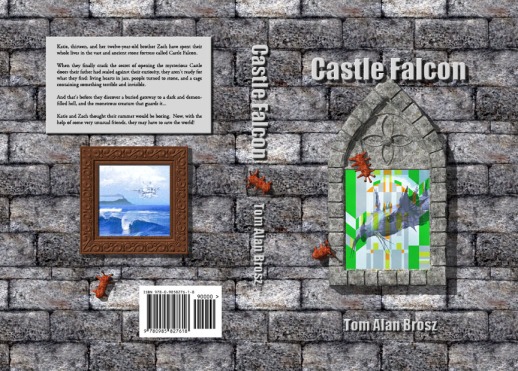I finally had to spend some money on my self-publishing odyssey, but at least I put it off as long as I could.
I’ve been researching marketing and review opportunities for my book, and discovered that some places don’t take a book seriously unless it’s got an ISBN, particularly paper versions. My Kindle version has an ASIN assigned by Amazon, and Amazon gave the Createspace paperback an ISBN, but my Lulu-printed hardcovers had no numbers, and the dust jacket hardcover is the most professional-looking edition and the one I’d prefer reviewers to see.
Lulu will give you a free ISBN if you sign up for their distribution programs, but there’s some baggage attached to that. Nothing sneaky, but for maximum future flexibility and control, I decided to cough up cash for my own ISBN numbers, which will list me (not Lulu) as the publisher of record. Besides, I’m not interested in their distribution programs just yet. My hardcovers are only being sold through the Lulu store (you might have noticed the subtle links on the main page).
Bowker, the place where you buy these numbers, charges $125 for one ISBN number. Ouch. But you can get ten numbers for $250! How’s that for a price break? Each edition of a given title needs its own number, and I have three Lulu versions, so I went with ten. That leaves me seven for future use.
Bowker also has an interface that records and organizes book information for each ISBN number you buy. I’m just starting to explore it. I don’t think it’s mandatory, but it might be useful.
Lulu, in its revision process, has a step where you can add your own ISBN to the book. I did that. Then I had to revise and upload a new text file because I added the ISBN number to the copyright page (required).
The next step was revising the cover to add the bar code. That’s this thing on the back cover:

How you do that depends on how your cover was created in the first place. Cover wizards sometimes generate these automatically. I usually import a one-piece cover image, which is harder to do but gives me more options. When I imported the cover image for Amazon’s Createspace paperback, Amazon automatically assigned the ISBN and pasted the bar code on the book cover image.
With Lulu, you are responsible for adding the bar code image to your cover graphics. They are pretty good about reminding you of this during the process.
Bowker will gladly sell you bar codes for your numbers for $23 each, but I suspected I had other options. Here’s one of them I found, a website that will create bar codes for you and deliver them in PostScript and PDF formats. I used the default 90000 code in the price part, but you can plug a price in there if you want.
After that, it was simple to use Photoshop to convert the PDF to an image file I could paste into my cover on its own layer.
I also found a nice tutorial on the process here. Be careful not to scale the image, as this will change the nice sharp edges of the bar codes into aliased gray edges.
Once I had modified all the cover images I uploaded them, and my Lulu books with ISBNs were ready to go. Here’s my one-piece cover image for the casewrap hardcover:

I found out that Lulu does change the price structure on ISBN-equipped books, even if you don’t use their distribution. The books immediately developed a more expensive purchase price for Lulu marketplace customers (the purchase price for me was still the same). Fortunately, by using their price discount function, I was able to twiddle the price back down to the same price it had before.
Now the book will be more appealing to reviewers, libraries, and such. I hope.
I ordered a bunch of copies to send to reviewers (getting reviews as a self-published author is a major topic of its own). Which also set me back a nice chunk of money.
Oh, well, at least it’s deductible.


